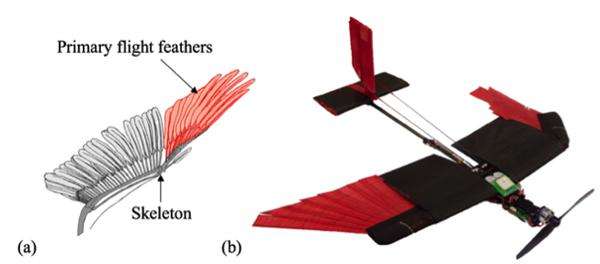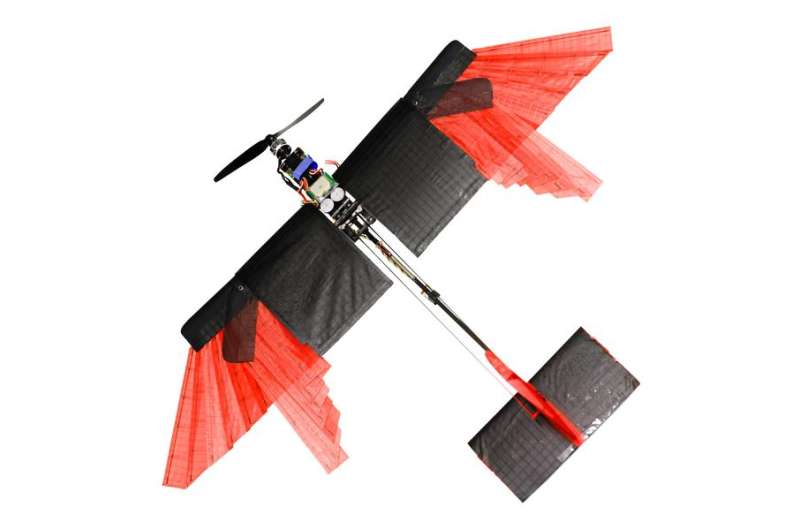A drone that flies (almost) like a bird

A drone has been equipped with feathers to increase its precision during flight. The bio-inspired device can spread or close its wings while flying, making it easier to maneuver and more resistant in high winds.
When they need to change direction, increase their speed or counter headwinds, birds alter the configuration of their wings. To steer, for example, they spread one wing and slightly retract the other. By adjusting their wingspan in this way, they create a calculated imbalance that causes them to turn. Up to now, only birds could do this so effectively.
After observing birds in flight, researchers from the Laboratory of Intelligent Systems had the idea of building an energy-efficient winged drone capable of changing its wingspan, flying at high speed and moving through tight spaces. Their research has just been published in the Royal Society journal Interface Focus.
Dario Floreano and his team wanted to develop a bio-inspired drone that could meet various aerodynamic requirements. It had to be capable of flying between obstacles, making sharp turns and coping with strong winds. By changing its geometry mid-flight, the drone can meet all these criteria. The moving part is located on the outer wings. It works like a bird's quill feathers, which are the large feathers at the edge of the wing.
"We were inspired by birds: they can radically transform the size and shape of their wings because they have an articulated skeleton that is controlled by muscles and covered in feathers that overlap when the wings are folded," explained Matteo di Luca. The drone also has feathers that it can fold and overlap like a fan.
One of the many challenges was in designing and building the complex morphing mechanism, in other words, mimicking nature to construct the drone. "It is extremely difficult to find the right balance between aerodynamic efficiency and the weight of the device," explained Stefano Mintchev. The wing is composed mainly of composite materials in order to maximize strength while reducing overall weight.
Morphing wings that can adapt to the environment and weather conditions are also an important issue in aeronautics. Engineers are still trying to find the ideal replacement for the rigid wings and ailerons of planes. For Floreano, the head of the Laboratory of Intelligent Systems, this is a promising project: "With the foldable wings, we discovered that we didn't need ailerons to help the drone turn. By changing the wingspan and surface area during flight, we could make it turn automatically."
This winged drone therefore opens up new possibilities. Because of its ability to adapt, it could prove very efficient at low altitude, in an urban environment where winds change rapidly.

More information: M. Di Luca et al. Bioinspired morphing wings for extended flight envelope and roll control of small drones, Interface Focus (2016). DOI: 10.1098/rsfs.2016.0092
Provided by Ecole Polytechnique Federale de Lausanne





















